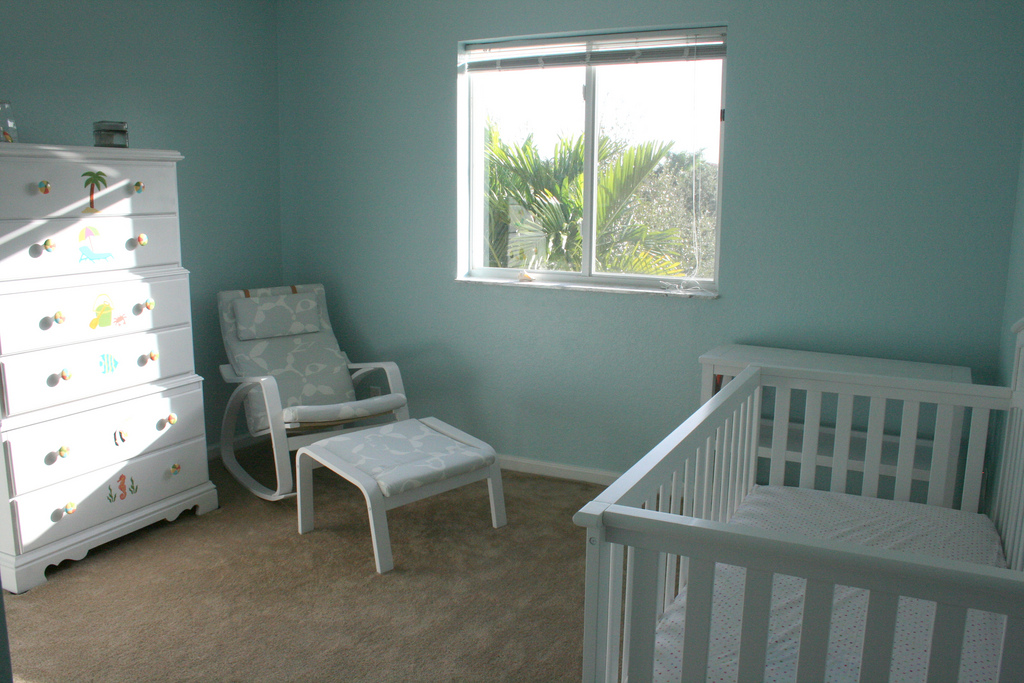Last year, I received an email from someone who worked in a mid-sized newsroom. She explained that she would soon be having a baby, and she was concerned about the paid parental leave policy in her organization.
A policy existed, but it wasn’t great — and she wasn’t sure how to compare the policy with other newsrooms, or even if she could speak up and make the case to her managers that it should be better. She asked if I could look into parental leave policies in newsrooms through this column.
It was good timing because it just so happened that I was in the process of becoming a parent myself. I’m now out on paid parental leave — my son was born six weeks ago.
Spending the first few weeks home with Asher has been utterly delightful and irreplaceable, and not something I would have ever been able to do if my leave was unpaid. I can not overstate the benefits of not only providing such a benefit for both birth and non-birth parents, but making sure people realize they can take their leave without being penalized.
Studies have shown paid parental leave “promote[s] parent-child bonding, improve outcomes for children, and increase[s] gender equity both at home and in the workplace.” And that is true for both birth and non-birth parents, though in many instances the stigma of taking a lengthy parental leave as a non-birth parent remains.
Only 12 percent of private sector workers have access to paid parental leave through their employer, according to the Department of Labor. The Family and Medical Leave Act states companies with more than 50 employees must protect new moms’ jobs and give them 12 weeks of unpaid leave, but whether or not it’s paid depends on the company and the state.
And leave for dads and non-birth parents is an entirely different story — even when leave exists, not everyone takes it for fear of the long-term repercussions at work. (The majority of new fathers surveyed from Fortune 500 companies take less than two weeks.)
Though many Silicon Valley companies have publicly upgraded and announced more expansive parental leave policies in recent years — in part to improve diversity and recruit top employees — whether newsrooms have upgraded has been more difficult to determine.
Many of the news organizations’ human resources sites I checked don’t list leave benefits, which forces potential parents to ask during interviews, or just wait and see. And many newsrooms have downsized in recent years, so they may not have 50 employees on-site. And even if they do, leaving a deadline-driven job for weeks may not be culturally acceptable.
It’s no secret that most newsrooms have a diversity problem — women report 38.1 of news in print and 25.2 percent of the broadcast news, according to the latest Women’s Media Center Report.
Related Training: What Great Bosses Know About Leadership Styles: A Poynter Tutorial
Last month, Liz Spayd at the Times reported on the declining number of women leading bigger news departments and fewer coming up through the pipeline. I mention this because both paid maternity and paternity leave — that is, leave for the non-birth parent — have been shown to keep women in the workforce, at higher salaries, and further their careers, according to the World Economic Forum’s latest gender-gap report.
I don’t expect newsrooms to offer unlimited leave in the first year, as Netflix does, but offering equitable leave for birth and non-birth parents, onsite childcare, and/or flexible schedules — and making it known that people can and should take advantage of those — goes a long way to recruiting and retaining the types of employees newsrooms keep saying they want on their mastheads.
Good policies around parental leave aren’t just good for parents; they also indicate something about an organization’s culture — whether it’s flexible, how it cares for employees outside of work and how it values retaining employees as their life circumstances change.
Last year, I asked people in many different types of newsrooms to anonymously report what kind of parental leave policy existed in their newsroom. My goal was to create something equivalent to the parental leave dataset that has been crowdsourced among Silicon Valley firms for potential hires to look at. (Hint: Someone should obtain a grant for this and then make it!) Below are highlights from the survey I created, with personal details obscured.
Midwest newsroom, 50-99 people: “Birth parents: First you have to use all your sick leave, then all your vacation time, then you get up to four weeks of leave at half pay. Fathers get one paid day of paternity leave, and have to use their vacation time for anything else.”
“[The policy] was designed by men and will probably never change. It puts working mothers at a financial disadvantage until they drag themselves back to work. The majority of people in our newsroom are grandparents, men who never had paternity leave, and whose wives didn’t work outside the home. They see no need for changes to the policy, because it was good enough for them.”
Southern newsroom, under 10 people: “We have no formal policy but also no paid leave. It’s a small startup and right now there’s no safety net. I would hope that changes as the organization grows. That said, I just left a 25-person organization that has 50 years in the news business and for part-time workers there were no paid sick days & no paid parental leave.”
Mid-Atlantic newsroom, over 99 people: “We don’t have parental leave, technically. New mothers may use up to six weeks of their accrued sick time (for a vaginal birth; it’s 8 weeks for a C-section) and call it ‘short-term disability.’ If they don’t have 6 weeks stored up, colleagues are asked to ‘donate’ hours to the new mom in question.
“As far as I know, we offer nothing for new fathers. As a woman expecting my first child, I no longer feel comfortable using the term ‘maternity leave’ when talking about policies in this country (let alone at the [organization] where I’ve been employed for six years). Look at Canada, much of Europe, etc.; their policies are so much more enlightening and progressive than ours, here in ‘The Land of the Free.'”
“It’s a disgrace. And let’s get real: when you’re a journalist steeped in daily news, working on deadline, how possible/practical is it to actually use a sick day?”
Mid-Atlantic newsroom, over 99 people: “Dow Jones allows eligible employees to take up to 12 weeks of paid time off.”
Western newsroom, under 50 people: “Our organization has under 50 employees so does not fall into FMLA. No. A basic first step would just to say that the organization follows the FMLA. That would at the very least protect your job, which is not guaranteed in our policy.”
“Second, our policy requires that you first use up all of your vacation (PTO) before using extended leave. So, say you are having a baby or undergoing a medical procedure. For the year prior to that, you have no paid time off after that leave. What if you need a day off to care for your new child or just a day off in the entire year following a major medical procedure? You can’t have one? That is completely nonsensical.”
“I find my organization’s sick and family leave policies to be anti-woman and anti-family. The inability to accumulate sick leave apart from vacation leave, and to accrue it over years, effectively saving up for childbearing purposes, is anti-woman. You are exacting a financial penalty on someone for bearing a child.”
Western newsroom, under 50 people: “No one has children if they work at my newsroom or their children are adults.”
Midwestern newsroom, over 99 people: “I don’t work there anymore, but wanted to chime in on this question because I found them to be actually very accommodating. This was almost five years ago. During my first leave, I took 18 weeks off, much of it paid. Much of the pay was because of comp time and vacation. My second time around, I took six-months off. I was mostly unpaid for that one. I wasn’t the only person who took a 6-month leave.”
Mid-atlantic newsroom, over 99 people: “This is at The Washington Post. Parents of either gender get one month parental leave. Mothers can use up all their sick time and vacation time for an additional 2-3 months of leave. (I am not sure if fathers can also use their sick time in a similar way.) Jobs are protected for up to six months, though after a parent runs out of leave that is unpaid.”
“I know my leave is comparable to friends who work at other national news organizations in D.C. (though some friends had to work at an organization for a year before they qualified for leave, and adjusted their family planning decisions accordingly.)”
“My husband works for a smaller trade publication, though, and his office technically offers no paternity leave. (I’m not sure about their maternity leave policy.) His boss has arranged for two weeks off and extra vacation time next year when our son arrives. His colleague who didn’t make a similar arrangement had to burn her vacation time to stay home with their toddler, wife and new baby, though.”
Mid-Atlantic newsroom, over 99 people: “Full-time employees who have been with the company at least a year have eight weeks paid family leave and can take up to six months off total, with the remainder unpaid except for any vacation days you use.”
Mid-Atlantic newsroom, under 10 people: “The two staff members with kids sometimes have to be late or stay home if their kid has something going on or is sick, and they’re given flexibility to arrive late/work late to make up for it, or work from home to be with a kid. As far as maternity/paternity leave, I’m not sure, because no one has had a child since I’ve worked with the company.”
Western newsroom, 26-50 people: “Journalism is a tough profession to be a mom in. The people at the top of my organization are men. The people in the middle are single and/or childless. Most of the parents in the workplace are ‘coasters.’ I lament that I’m becoming a coaster.”
Western newsroom, 26-50 people: “I honestly have no idea. It’s never applied to me, so I haven’t looked into it. I even pulled up my employee benefits guide to try and find the answer, and I can’t find one. I know sick time extends to taking time off to take care of your kids if they’re ill, but otherwise? No clue.”
Northeastern newsroom, more than 99 people: “There’s basically zero work from home tolerance, which may make it hard to ease back into things.”
Northeastern newsroom, 11-25 people: “We get three weeks of parental leave — both men and women.”
Northeastern newsroom, more than 99 people: “Tying parental leave to short term disability and sick and vacation policies is stupid. Organizations should simply say, we commit full pay for a period of time (no less than 12 weeks) and you can use your banked time however you want. because if it’s tied to sick time, then women end up using all of their sick time and what happens if they get sick or their kid gets sick down the line — they won’t have anything left. it hurts (mainly) women unfairly.”
Correction: A previous version of this column incorrectly cited a statistic from the Women’s Media Center report.






